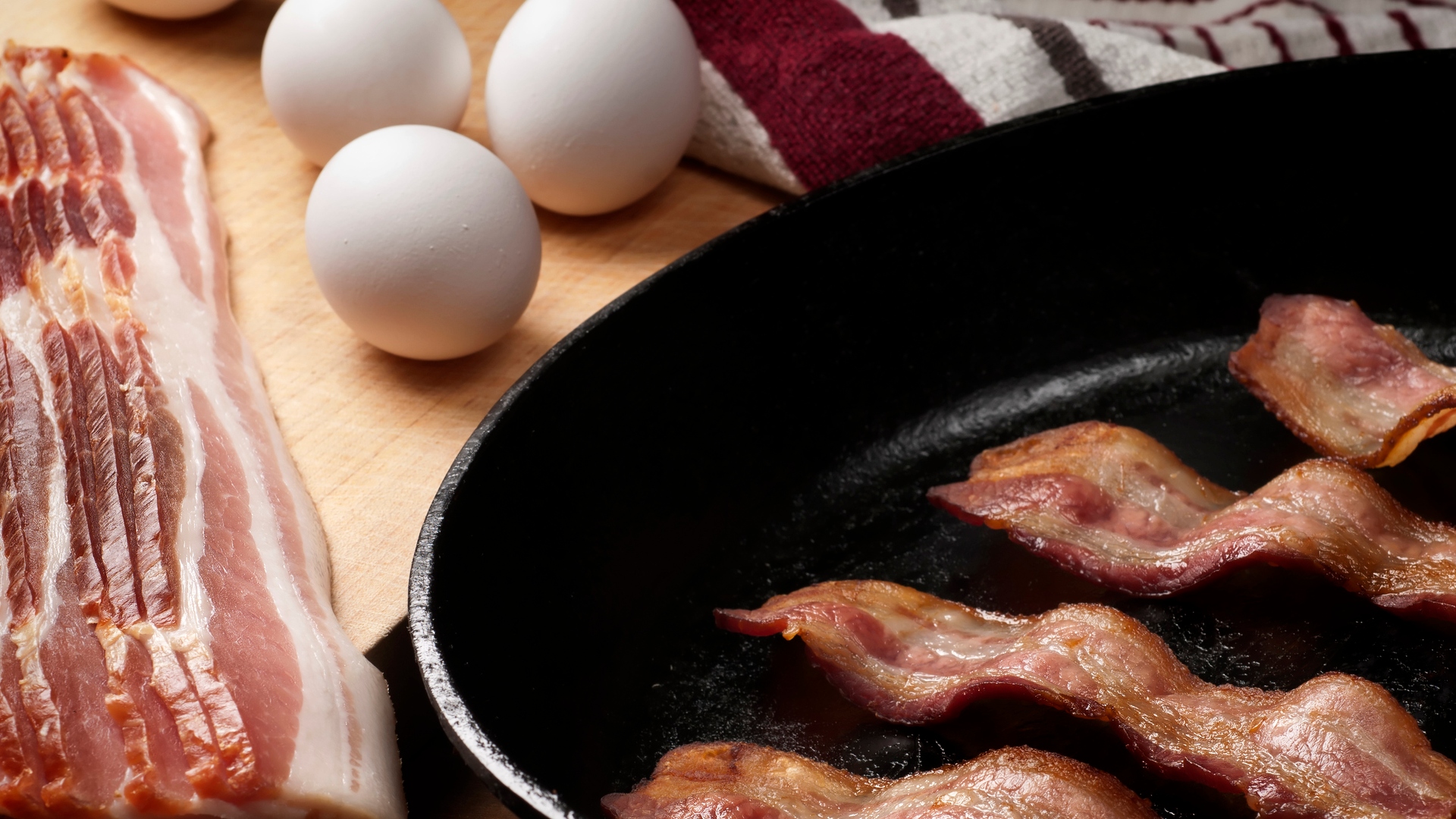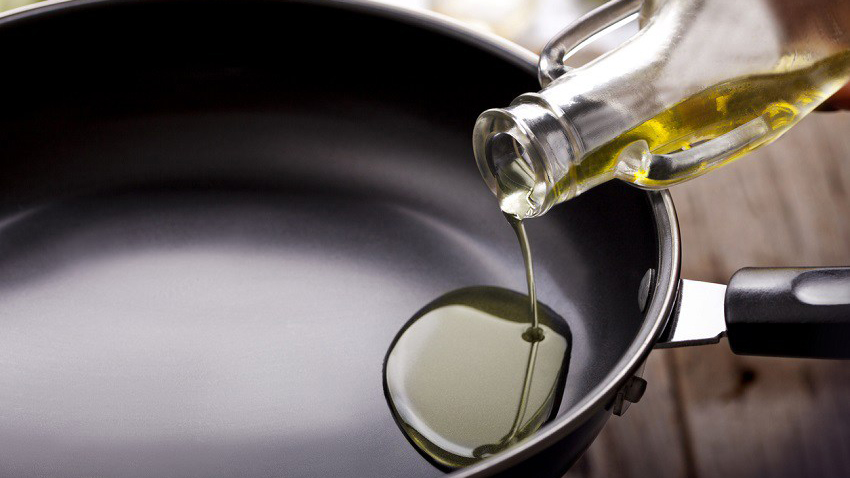Keto, Whole30 and Paleo: An INTEGRIS Health Dietitian Gives His Real Opinion

When a diet focuses on eating whole foods, it’s easy to assume the diet is healthy. While eating a spinach, egg and cheese omelette for breakfast is better than eating a loaf of Wonder Bread, might there still be problems lurking in the whole food diets that have gained such popularity in the last decade?
We’ve looked at three of the most popular diets out there – Keto, Whole30 and Paleo – and asked Brent Wilson, who is a registered dietitian and certified diabetes educator at INTEGRIS Health, for his real opinion.
Keto
The Keto diet is a low-carb (or no-carb), high-fat diet, which forces the body into a state of ketosis, causing blood sugar levels to drop, which then burns fat for energy instead of sugar.
You might be familiar with ketoacidosis, which affects many people with type 1 diabetes. Ketosis is a milder form of ketoacidosis. While ketosis has been proven to encourage weight loss, some experts also argue it causes muscle loss.
One of the benefits of the Keto diet is how quickly you can see results. In fact, Keto is the No. 2 diet in the "Best Fast Weight-Loss Diet" category in the annual rankings of U.S. News and World Report.
On the Keto diet, you need to get 60-80 percent of your calories from fat, and the rest should mostly come from protein. You can have about 5-10 percent of your daily calories come from carbs, but they need to be healthy carbs like leafy greens and other non-starchy vegetables. This strict diet has to be followed faithfully with no cheating, or the body won't stay in ketosis.
Your diet will focus on fish and seafood, meat, cheese, poultry, eggs, plain yogurt, a few low-carb vegetables, and a lot of healthy fats like avocados and olive oil. Foods that are no-no's include grains (including bread and pasta), legumes, starchy vegetables, almost all fruits (a few berries in small portions are allowed) and anything with added sugar.
As you can see, the Keto diet generally involves eating a lot of saturated fat and animal protein, which can raise LDL cholesterol levels and is a risk factor for heart disease. Some dieters might have a tendency to rely heavily on the least-healthy fats and protein like cheese and nitrate-packed processed meat, which might negatively impact heart health.
Some nutrition experts have suggested that Keto is best for those who are significantly overweight, and the diet should only be used for brief periods under clinical supervision.
What INTEGRIS Health dietitian Brent Wilson says: “I love that Keto raises awareness of our country’s excessive carbohydrate intake, especially from refined carbs and simple sugars. It’s a huge reason why we have such a great prevalence of diabetes and obesity. But I don't like how the extreme carb restriction will limit someone’s vegetable intake. I do agree with its focus on eating more fats, but I wish it would provide more education on the proper types of fats. Many will add processed meats and cheese to eat more fat, but instead I strongly recommend increasing grass-fed meats naturally high in omega-3’s, grass-fed butter, fatty fish and monounsaturated fats like avocado and olive oil.”
Whole30®
The Whole30 craze began in 2009 after the founder blogged about her 30-day dietary experiment in which she eliminated dairy, alcohol, added sugar (or any kind of sweetener), legumes, grains, MSG, carrageenan, sulfites and all baked goods and treats (even if they were made of Whole30-approved ingredients).
Whole30 is different than Keto and Paleo because it’s not meant to be a long-term diet. Those following Whole30 eliminate the foods for only 30 days. Once the month is over, dieters slowly reintroduce food groups back into their diet.
The purpose of this 30-day plan is to “reset” your body and discover which foods negatively affect you. In the end (if done correctly), you’ll have a better idea of the foods you can and can’t tolerate. Some might learn they have a sensitivity to dairy, while others may find dairy is fine for them. If you’re not bothered after adding dairy back into your diet, then you’re safe to consume dairy in moderation post-Whole30.
Whole30 has some benefits. Because preservatives like carrageenan, sulfites and other common additives are not allowed, participants have to learn to read labels — something everyone should do. You’re also not supposed to weigh yourself during the 30 days, as the number on the scale shouldn’t be the main indicator of your health or self-esteem.
Despite its benefits, Whole30 ranks pretty low in comparison to other diets, largely because it isn’t backed by any real research and is “extreme and restrictive.” Also, the quantities of fats, protein and sodium consumed on average during Whole30 exceed recommended amounts.
Ultimately, Whole30 could prove beneficial since it helps you get smarter about your food by reading labels. However, the permanent elimination of healthy grains, legumes and dairy could be too restrictive for many and sets them up for failure when they aren't able to stick to the plan. It also puts dieters at risk for missing out on important things like fiber, calcium and vitamin D.
What INTEGRIS Health dietitian Brent Wilson says: "I love Whole30 for its focus on eating real, whole foods. But it is rather restrictive, and I don’t think it’s a good long-term eating plan. On the other hand, it is so educational if done correctly. By removing certain foods, like dairy, grains or legumes, it allows you to identify which foods are problematic for you once Whole30 is over and you begin to add them back. My personal experience with Whole30 was great. It reinforced the idea that refined carbs like rice, pasta, bread and tortillas can easily be replaced by vegetables. I also found that dairy is not for me as it caused gastrointestinal issues and bloating.”
Paleo
Millions of years ago, in the Paleolithic era, humans supposedly subsisted entirely on meat and plants. The Paleo diet suggests our bodies are not equipped to handle the many foods that have taken form since agriculture took over about 10,000 years ago. The solution? Return to the diet of our ancestors.
The Paleo diet centers around eating whole foods, becoming aware of the sources of the food you eat, cutting out anything processed, and focusing on plant-based meals with high-quality proteins and fats.
Although it's similar to the Keto diet, most of Keto's calories come from fat whereas most of Paleo's calories come from protein. In addition, Paleo suggests eating only grass-fed meat as it is more sustainable and closer to the meat that our ancestors ate, but for Keto dieters that’s not as big of a deal. The Paleo diet also doesn't enforce strict ratios like Keto.
The Paleo diet is meant to be a long-term lifestyle change, not just a strict "reset" like Whole30, or fast weight-loss solution like Keto. Although Paleo eliminates many of the same foods as Keto and Whole30 (such as grains, legumes and refined sugar), in the Paleo diet you are allowed natural sweeteners like honey, maple syrup and coconut sugar. Unlike Keto, it suggests tossing the dairy and cheese and allows unlimited non-starchy vegetables.
Besides non-starchy vegetables, Paleo lets you eat virtually unlimited quantities of fish and seafood, grass-fed meat and poultry, free-range eggs, and healthy fats like avocado, olive oil, coconut oil and butter from grass-fed animals. On a more limited basis, you can still have starchy vegetables, berries, fruit, nuts, seeds and the natural sweeteners mentioned above.
One of the great things about Paleo is the way it allows for flexibility. While diets like Whole30 and Keto discourage substitutions, Paleo allows for baked treats and sweets when they are made with natural substitutions, like arrowroot flour and maple sugar.
The Paleo diet has shown significant results in those who are able to sustain it. Weight loss, improved glucose tolerance and better blood pressure have all been noted. However, some experts are bothered by the lack of grain (a good source of fiber) and the lack of dairy (a good source of protein and calcium). Other experts have expressed concern for the very foundation of the diet itself.
Other critics note the Paleo hypothesis ignores the fact that the diets of our Paleolithic ancestors would have varied based on geographic location, climate and availability, and also ignores evidence suggesting early humans may have eaten grains. Finally, some worry because our hunter-gatherer ancestors were perhaps not that healthy.
What INTEGRIS Health dietitian Brent Wilson says: “Paleo is my favorite and what I follow daily. It is SO important to eat food from the earth. Type 2 diabetes, obesity and many of the chronic diseases we deal with today were nonexistent in our ancestors. They weren’t dying because of their blood sugars and waistlines. I love Paleo because it takes elements of Whole30 and Keto and creates a lifelong and sustainable way of eating with its laser-like focus on the quality and source of the food allowed on the diet.”
It's important to note that due to their restrictive natures, Keto, Whole30 and Paleo can be dangerous for someone who already has a disordered relationship with food. These diets can create a mentality that food is the enemy.
When it comes to losing weight and dieting, there is no one-size-fits-all. It’s important to consult your doctor before pursuing any diet. Keep reading the On Your Health blog for more information on nutrition and weight loss.


